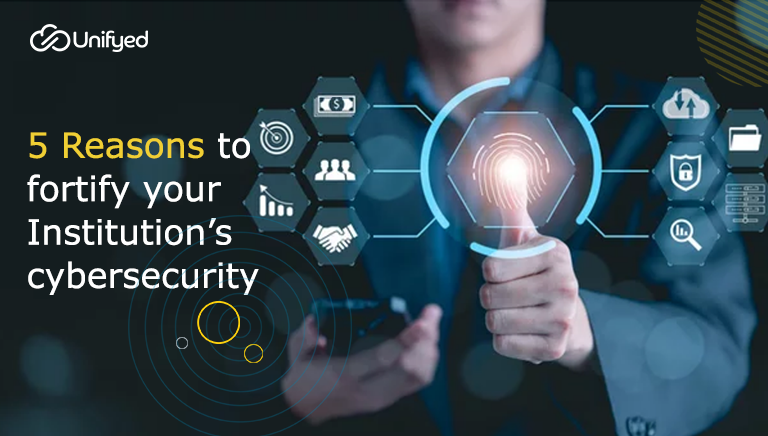5 Reasons to fortify your Institution’s cybersecurity.
The pandemic brought about many unprecedented changes and left a significant impact on cybersecurity. Digitalization was not all glitters; it opened more doors for cybercriminals and contributed to the world’s loss. According to Atlas VPN, the total cost incurred from cybercrime was over $1 Trillion in 2020; which makes 1% of global GDP…and it didn’t end there. According to GetAstra, cybercrime caused damage of over $6 Trillion in 2022. The number is increasing drastically and is expected to do so in the years to follow.
The Vulnerabilities with Higher Education Cybersecurity
Higher Education institutions remain an easy target for cybercriminals. Unlike more financially attractive targets, Higher Education institutions operate on a more readily accessible network and foster potentially exploitable information on their students and faculty. Several reasons contribute to making higher education an easy target, you can find them below.
- Data in one network: Institutions are liable for storing information on their students and faculty, which contain personal, medical, and financial data. They may also have information from government agencies, NASA, the National Institutes of Health (NIH), and the military. Cybercriminals may find this information useful and may infiltrate the system to obtain it.
- Legacy Systems: Institutions are typically restricted to stringent budgets and utilize the internet for much longer durations, which indicates that these institutions maintain legacy systems with more vulnerabilities, as compared to the more modern systems. The complications pertain to the expensiveness of more modern systems.
- Easy Accessibility: Larger institutions require several devices and IoT tools to operate, along with the devices that belong to the students and faculty. Furthermore, cybersecurity hygiene in institutions is often compromised as students prioritize convenience over safety. To keep all the devices connected, network access is easy and readily available. This further contributes to these institutions being an easy target of cyberattacks.
- Cybersecurity Complexities: Institutions typically center around the regulations for freedom of information, which hinders cybersecurity and contributes to complexities in maintaining the security.
- Lack of Knowledge: A majority of school districts require cybersecurity training for their staff, which majorly contributes to a poor cybersecurity infrastructure. Staff’s lack of knowledge plays a vital role in institution’s defenselessness against cyberattacks. If the staff is correctly aided with security awareness, the schools would be able to fortify their cybersecurity to a certain extent.
The Gist of the Matter
Higher Education Institutions are susceptible to many cyberattacks, which leaves information on students, faculty, and finance vulnerable accessible for bad actors to misuse. The factors of vulnerabilities mentioned above majorly contribute to this issue, but another common reason adds to this list – weak or stolen credentials. Users are required to store complex passwords to keep their accounts protected from various types of attack, but such passwords are always hard to remember. Hence, users often tend to forget their passwords and reset it each time. To keep these accounts and information safe, Passwordless does a commendable job.
Passwordless Authentication to the rescue!
Passwordless Authentication enables users to log into their accounts without the use of passwords altogether, collectively reducing the number of times a user changes their password and simultaneously reducing the cost incurred on it. It uses different methods of authentication ranging from biometrics, possessions, and magic links; all these methods do not require users to memorize any complicated passwords. It can protect student accounts in institutions and save valuable information stored in the institution’s database. Furthermore, higher education institutions can benefit from Passwordless Authentication and protect their data effectively and most cost-efficiently.

